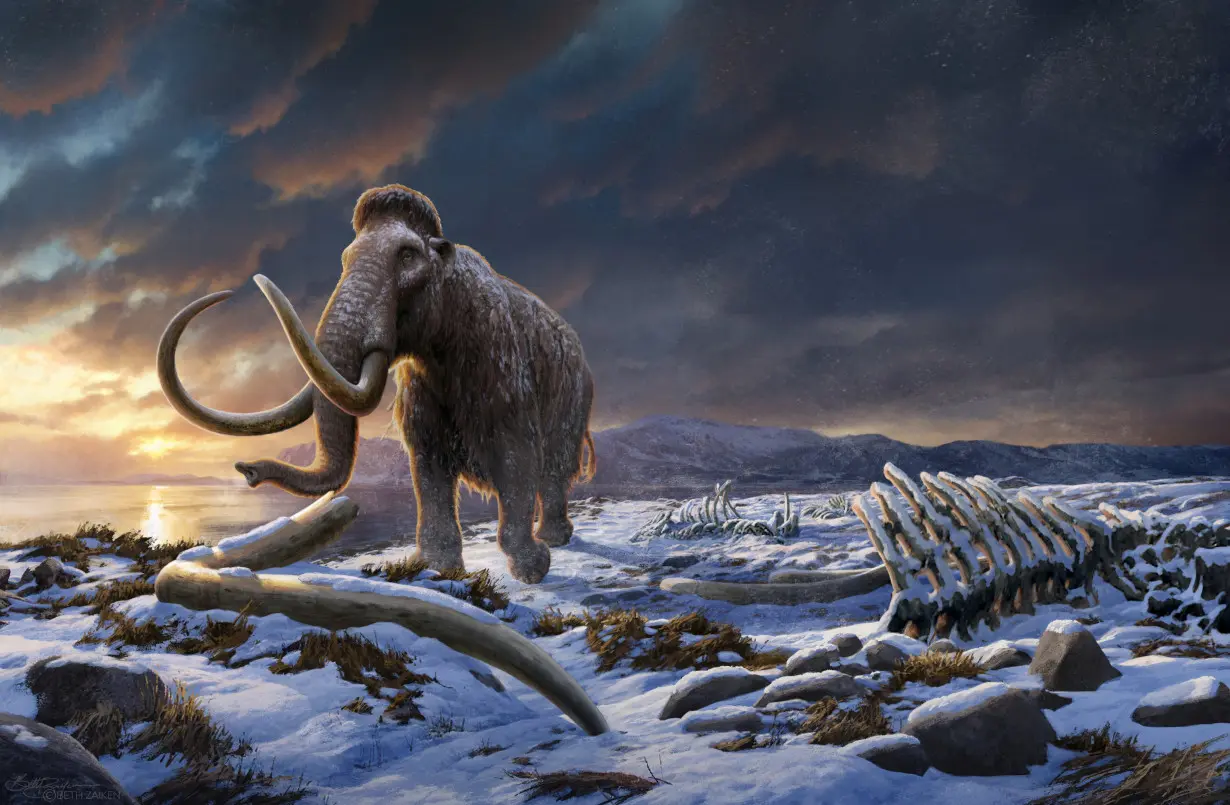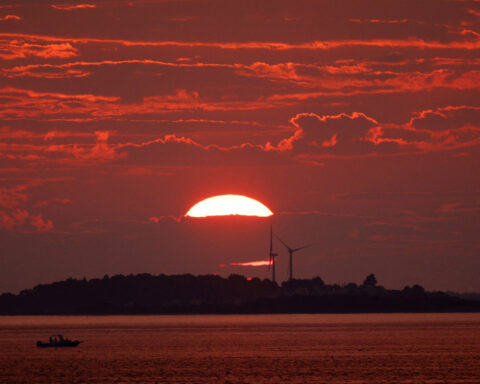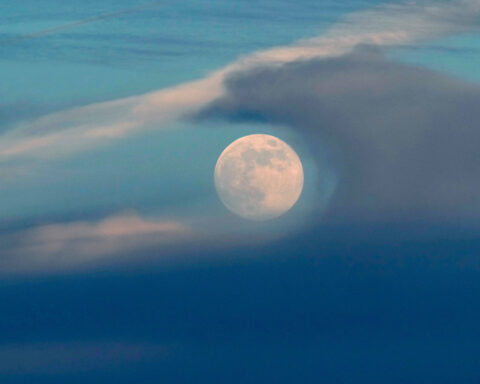By Will Dunham
(Reuters) - About 4,000 years ago, the last of Earth's woolly mammoths died out on a lonely Arctic Ocean island off the coast of Siberia, a melancholy end to one of the world's charismatic Ice Age animals. But what doomed this last mammoth population on Wrangel Island? A new genomic analysis deepens the mystery.
The study offers the fullest account to date of the inbreeding, deleterious mutations and low genetic diversity experienced by this population during 6,000 years of isolation on the island but concluded that, despite previous suggestions, these factors are unlikely to have doomed the Wrangel mammoths.
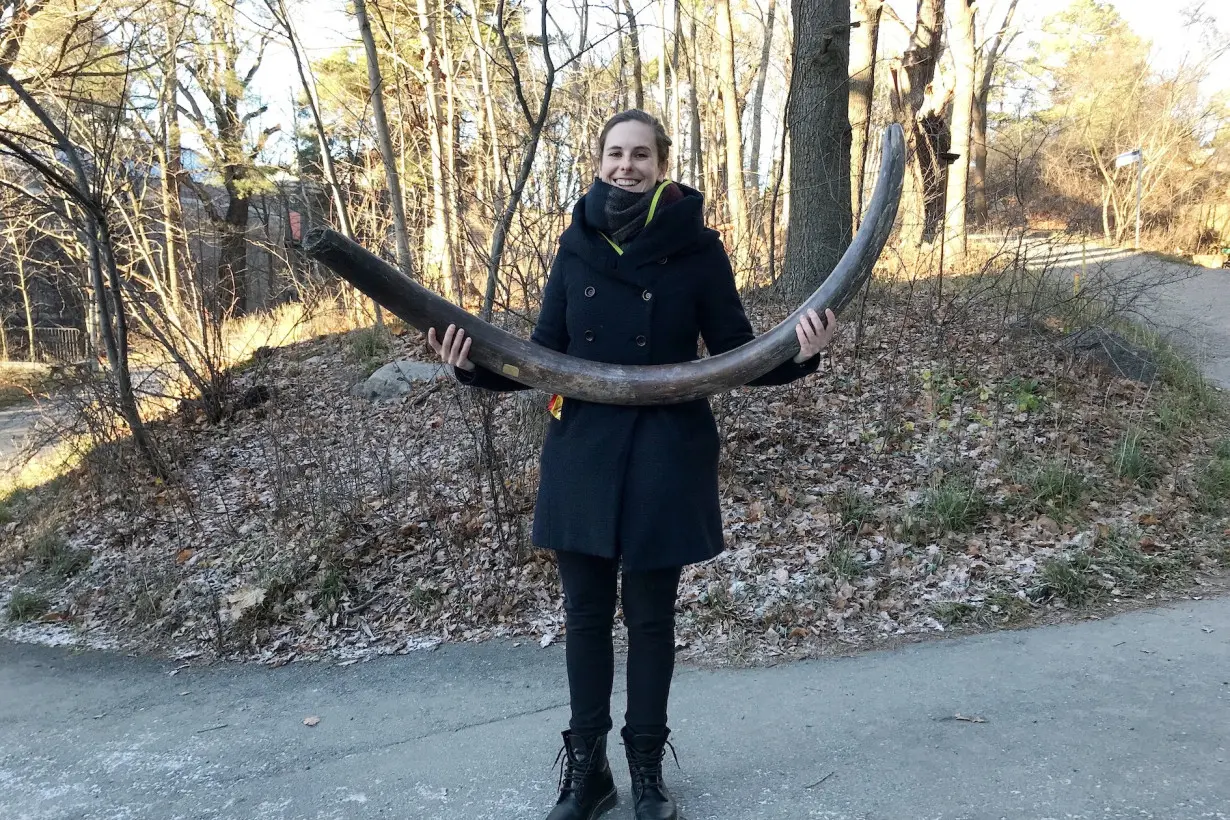
"This suggests that something else, and very sudden, caused the population to collapse," said evolutionary geneticist Marianne Dehasque of Uppsala University in Sweden, lead author of the study published on Thursday in the journal Cell.
The researchers examined genome data obtained from the remains of 14 Wrangel mammoths and seven mammoths from a Siberian mainland population ancestral to the island dwellers, dating to up to 50,000 years ago.
As the Ice Age eased, the dry steppe tundra where mammoths long had thrived transformed, gradually from south to north, into wetter temperate forests amid rising global temperatures, confining these animals to Eurasia's northernmost reaches.
"This is probably also how mammoths eventually ended up and became isolated on Wrangel Island, which lost its connection to the mainland around 10,000 years ago due to rising sea levels. It may have even been a single herd that populated the island," Dehasque said.
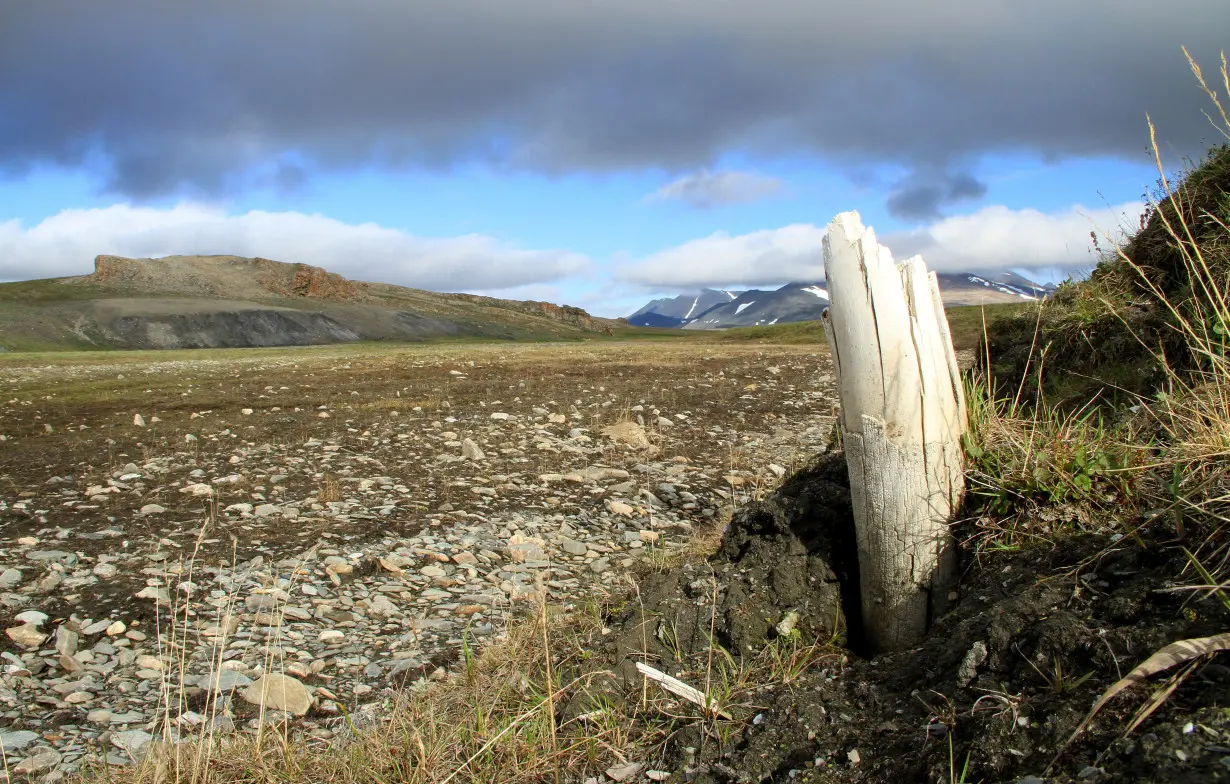
The genome data indicated that the population isolated on mountainous Wrangel originated with at most eight individuals, then grew to 200 to 300 mammoths within about 20 generations - around 600 years - and remained stable.
The study detected reduced diversity in a group of genes crucial to the immune system. But while the mammoths slowly accumulated moderately harmful mutations, the most deleterious defects were disappearing from the population, apparently because individuals carrying these were less likely to survive and reproduce.
The study included no genomes from the population's final 300 years, but such remains have now been unearthed and genomic analysis is planned.
Previous studies had attributed the extinction to accumulated genetic defects.
"The reason we don't think inbreeding, low genetic diversity or harmful mutations caused the population to be doomed is that if that had been the case, the population should have gone through a gradual decline in size, where it dwindled toward extinction with an accompanying increase in inbreeding and loss in diversity," said evolutionary geneticist Love Dalén of the Centre for Palaeogenetics, a collaboration between Stockholm University and the Swedish Museum of Natural History.
"But this is not what we see. There is virtually no change in inbreeding levels or genetic diversity throughout the 6,000 years the mammoths were isolated on the island. This means that the population size was stable through time," Dalén added.
Human hunting also does not appear to have been the culprit.
"I agree that the mystery of the mammoth's demise continues. From archeological evidence, we know that humans only arrived 400 years after mammoths went extinct," Dehasque said.
"Fire hearths and habitation structures would be easy to find, as well as flint shards, reworked bones and tusks, et cetera. But there is simply no trace of humans having interacted with the mammoths on Wrangel," Dalén added.
An infectious disease, possibly brought to the island by birds, is one possibility.
"Perhaps the mammoths would have been vulnerable to that given the reduced diversity we identified in the immune system genes. Alternatively, something like a tundra fire, a volcanic ash layer or a really bad weather season could have caused a really bad growth year for the plants on Wrangel. Given how small the population was, it would have been vulnerable to such random events," Dalén said.
"In other words, it seems to me that maybe the mammoths just got unlucky. Had it not been for such bad luck, we would perhaps still have had mammoths around today," Dalén added.
(Reporting by Will Dunham in Washington, Editing by Rosalba O'Brien)

 Trump has begun another trade war. Here's a timeline of how we got here
Trump has begun another trade war. Here's a timeline of how we got here
 Canada's leader laments lost friendship with US in town that sheltered stranded Americans after 9/11
Canada's leader laments lost friendship with US in town that sheltered stranded Americans after 9/11
 Chinese EV giant BYD's fourth-quarter profit leaps 73%
Chinese EV giant BYD's fourth-quarter profit leaps 73%
 You're an American in another land? Prepare to talk about the why and how of Trump 2.0
You're an American in another land? Prepare to talk about the why and how of Trump 2.0
 Chalk talk: Star power, top teams and No. 5 seeds headline the women's March Madness Sweet 16
Chalk talk: Star power, top teams and No. 5 seeds headline the women's March Madness Sweet 16
 Purdue returns to Sweet 16 with 76-62 win over McNeese in March Madness
Purdue returns to Sweet 16 with 76-62 win over McNeese in March Madness
